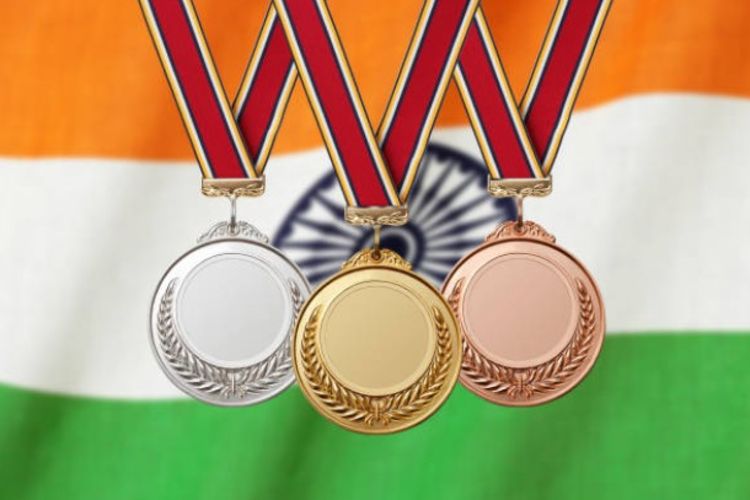
Despite a vast talent pool, India continues to lag at the Olympics and other top-tier sporting events, where the United States, China, and smaller nations with efficient systems dominate. The problem lies less in the absence of talent and more in the governance structures that shape Indian sport. In a bid to address this, Parliament has passed two landmark pieces of legislation — the National Sports Governance Bill and the National Anti-Doping (Amendment) Bill — within 24 hours, in what Sports Minister Mansukh Mandaviya described as the biggest reform in Indian sport since Independence. Once the President gives assent, India will join a select group of 21 countries with a dedicated sports law.
India’s sporting record has long reflected the weaknesses of its institutional framework. While cricket thrives under powerful, well-funded bodies, most other sports remain hamstrung by outdated federations, factional disputes, and minimal investment. Grassroots programmes are fragmented, coaching standards uneven, and infrastructure often sub-par. The absence of a binding legal framework has allowed opaque practices to persist, leaving athletes with limited recourse when faced with mismanagement or bias. Against this backdrop, the new legislation represents not just a procedural change, but an attempt to rewire the governance culture that has held back India’s sporting potential.
READ | Bharat Taxi: A cooperative challenge to Ola and Uber
National Sports Governance Bill
The new law creates the National Sports Board (NSB) to oversee national sports federations, with powers to de-recognise bodies that fail to hold timely elections, commit financial irregularities, or misuse public funds. To ensure compliance with global norms, any punitive action must first be discussed with the relevant international governing body. A parallel National Sports Tribunal, with powers equivalent to a civil court, will handle disputes over athlete selection, federation elections, and other administrative issues. Appeals will lie directly with the Supreme Court, cutting down years of litigation.
Transparency is another pillar. Recognised national sports bodies will be brought under the Right to Information (RTI) Act — though an amendment limits this to those relying on government funding, effectively sparing the Board of Control for Cricket in India (BCCI). Administrator age limits are being eased from 70 to 75, in line with global practice, and the mandatory tenure for election eligibility in National Sports Federations has been reduced from two terms to one. For Indian Olympic Association (IOA) President P.T. Usha, that means the chance to seek another term.
The National Anti-Doping (Amendment) Bill strengthens the autonomy of the National Anti-Doping Agency (NADA) to meet the standards of the World Anti-Doping Agency (WADA). The original 2022 Act had drawn WADA’s objections because it gave the government oversight through a National Board for Anti-Doping in Sports. The amended version strips those powers, granting NADA operational independence. This closes a key compliance gap and helps protect Indian athletes from sanctions that could threaten their participation in global competitions.
Why the Change Was Needed
For decades, India’s sports administration has been criticised for inefficiency, opaque decision-making, and factional disputes. In the absence of a binding sports law, governance rested on a loosely enforced sports code without legal standing. The reforms aim to end ad hoc management and bring India in step with international standards — a necessity if the country is serious about bidding for the 2036 Olympics.
P.T. Usha has called the legislation a step towards transparency, accountability, gender parity, and restoring confidence among athletes, sponsors, and federations. Supporters expect it to create an environment where athletes can focus on performance rather than politics.
Not all responses have been favourable. Members of the Congress and the Biju Janata Dal warned that the law risks excessive centralisation and pays insufficient attention to grassroots development at the district and block levels. Critics argue that reform should empower local structures instead of concentrating authority in national bodies. Without robust talent scouting, coaching networks, and school-level engagement, governance reform alone may not deliver medals.
Beyond Governance: The Cultural Challenge
India’s underperformance is not explained solely by governance lapses. Unlike in countries where sport is integral to education and community life, Indian society often treats it as secondary to academics. Many athletes enter sport to secure government jobs under sports quotas rather than to build careers of excellence. Infrastructure is poor outside cricket, funding is sporadic, and corporate sponsorship is scarce. These factors, combined with limited support systems for athletes, mean that even promising talent often fades before reaching elite levels.
With the largest population in the world, India should have no shortage of world-class athletes. The two bills, once enacted, provide a legal foundation for cleaner, more accountable administration and fairer play. But lasting improvement will depend on what follows: investment in infrastructure, grassroots promotion, better coaching, and a cultural shift that treats sport as a valued pursuit in its own right. Only then can the ambition to host — and excel at — the 2036 Olympics move from aspiration to reality.
